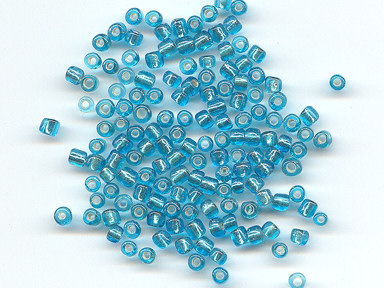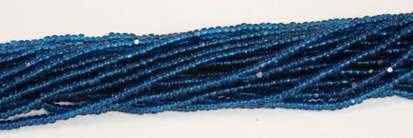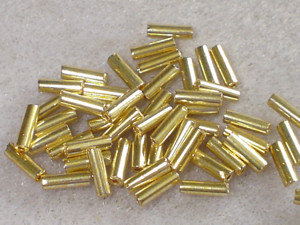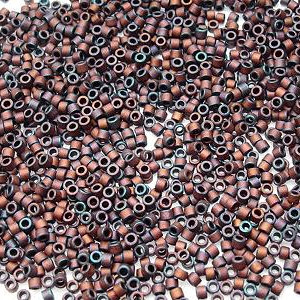Seed Beads
Seed beads are a descriptive term for small beads used in beading or jewellery making. They make great spacers in between larger beads in and also work well as embellishments in arts and crafts projects.

Aqua Seed Beads
Seed beads are made from long canes of glass and are then sliced to size. The cut, finish, colour, detailing or quality will determine the price of seed beads. The more uniform the seed beads the higher the price. Although, less uniform shapes can add unique dimension to jewellery design giving an authentic vintage feel that may be missing from perfectly formed beads.
[Hidepost=1]
The best quality seed beads are often produced in Japan. Bead production here is highly mechanized and colour matching is done with a high degree of accuracy that is not often found in other countries. The Czech Republic famed for its glass production also produces high quality seed beads and so if you are after the very best then it is a good idea to ask your bead supplier where their seed beads originate from.

Clear Seed Beads
Often interchanged with the words “seed beads” is the term rocailles, but you will come across many other terms for seed beads and within this confusing category each term may refer to a particular characteristic of the bead, however some people will use the terms indiscriminately, so it is wise to check what you are after.
Below are some names and features of the various families of seed beads:
Charlotte l x – Seed bead with a facet

Charlotte Seed Beads
Bugle Beads – Narrow tube beads which can be smooth or have an angular cut

Bugle Beads
Delica – These are Japanese seed beads by the brand Miyuki.

Delica Seed Beads
The uniform shape and size of Delica beads makes them the ideal choice for precision seed beadwork. They are great for projects involving brick and peyote stitch. The Japanese manufacturer, Miyuki, is known for the quality of their seed beads. Delica sport a larger than average hole which allows for multiple threads to pass though the bead.
Seed beads come in many sizes, you many find that they range in size 26 (like a grain of sand to a size 6 (about 4mm). Remember the larger the number the smaller the size. It is thought that the number refers to the number of beads that fit to a standard inch measurement. So, eleven size 11 seed beads would fit into an inch measurement. This is an approximate guide and the measurements of seed beads are quite antiquated. It should be remembered that bead sizes are not an exact science and date back over centuries.

Lime Seed Beads
[/Hidepost]



 Click
Click